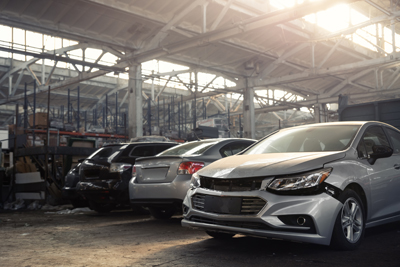Mitchell, an Enlyte company, on Aug. 10 announced the availability of its Q2 2023 report: Plugged-In: EV Collision Insights.
The report highlights a continued increase in electric vehicle (EV) repairable claims frequency, which rose to 1.49% in the U.S. and 2.64% in Canada last quarter. It also documents the differences in claims severity, post-accident drivability and collision repair when comparing EVs to automobiles powered by an internal combustion engine (ICE).
“Not surprisingly, claims severity for repairable EVs is outpacing that of ICE alternatives,” said Ryan Mandell, director of claims performance at Mitchell. “However, the most recent data shows that EVs are less likely than ICE vehicles to be non-drivable following an accident. Despite greater interconnectivity between components, they have fewer moving parts. So, unless an EV gets hit from behind, it has a higher likelihood of drivability. Differences like these will have a dramatic effect on the auto insurance and collision repair markets, given the recent growth in EV adoption.”
According to Cox Automotive, U.S. EV sales broke another record in Q2, with nearly 300,000 battery-electric vehicles sold, an increase of 48.4% over Q2 2022. While adoption may be slowing in Canada, the International Energy Agency predicts global EV sales of 14 million in 2023 with new purchases accelerating in the second half of the year.
In addition to tracking general EV collision claim trends such as frequency and geographic distribution, this quarter’s report includes up-to-date statistics on how EVs differ from ICE automobiles when it comes to:
Claims Severity: Average severity for all EVs was $963 higher in the U.S. and $1,328 higher in Canada than ICE alternatives. Those cost differentials jumped to $1,589 and $1,600 respectively when looking at Tesla models only.
OEM Parts Utilization and Percentage of Parts Repaired: Most EV parts are provided directly from the manufacturer, with 90.75% of repairable EVs using OEM parts as compared to 66.50% for ICE automobiles, a difference of 24.25%. Additionally, EV repairs include a lower percentage of parts repaired versus replaced: 13.49% versus 19.20% for ICE-powered options.
Average Refinish Hours: Labor hours for paint refinishing can be 40% of the total labor time for an average repair order---making them a key driver of collision claim expenses. In Q2, refinish hours for EVs averaged 8.51 compared to 8.02 for ICE automobiles.
To download the latest Plugged-In: EV Collision Insights report, visit the Mitchell website. You can also subscribe to future issues or access previous reports online at the same link.
Source: Mitchell














